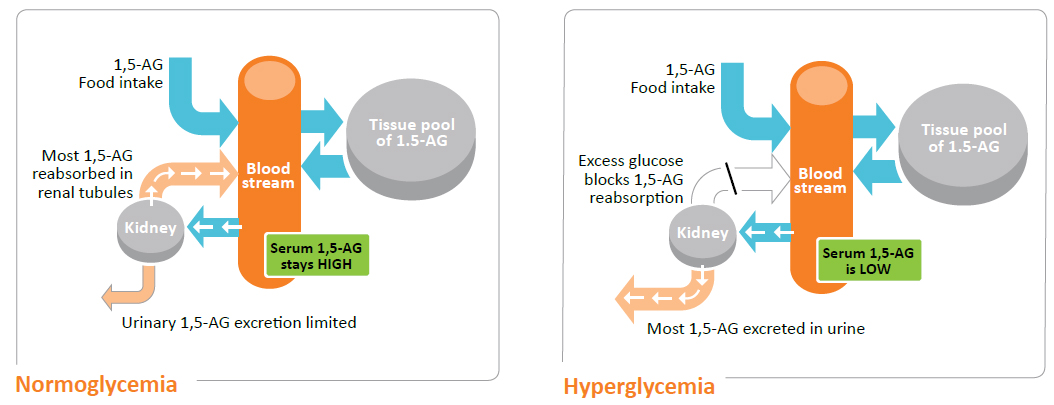1,5-AG
1,5-Anhydroglucitol (1,5-AG) is a polyol with a structure in which the first-position hydroxyl of glucose is reduced. It is contained in a wide variety of foods and is hardly metabolized in the body [1]. Therefore, 1,5-AG in food forms a stock in the body after being absorbed from the intestinal tract, and is distributed widely in various organs. The amount of 1,5-AG obtained from daily meals is less than that stocked in the body, and its level in the plasma does not change between before and after taking meals. If it is taken excessively, it will be excreted in the urine. 1,5-AG is reabsorbed 99.9% by the 1,5-AG/mannose/fructose cotransporter (sodium glucose cotransporter 4; SGLT4) in the renal tubulex[2].
This mechanism of absorption is the same as that for glucose, and reabsorption of 1,5-AGisinhibited if the distribution of glucose to the renal tubule increases (Fig. 7.2) [3,4]. Therefore, in the hyperglycemic state, urinary excretion of 1,5-AG increases and serum excretion of 1,5-AG decreases.[2]
Since 1,5-AG increases or decreases depending on the excretion amount of urinary glucose, it reflects the change in short-term glycemic control more sensitively than HbA1c. Therefore, measurement of 1,5-AG helps to evaluate glycemic excursion and postprandial hyperglycemia for several days, which cannot be detected by an index for long-term glycemic control such as HbA1c. The normal reference value for 1,5-AG is regarded to be ≥14.0 μg/mL.[2]

1,5-AG circulation mechanism in blood

Contact Us
Follow us
 Wechat
Wechat

